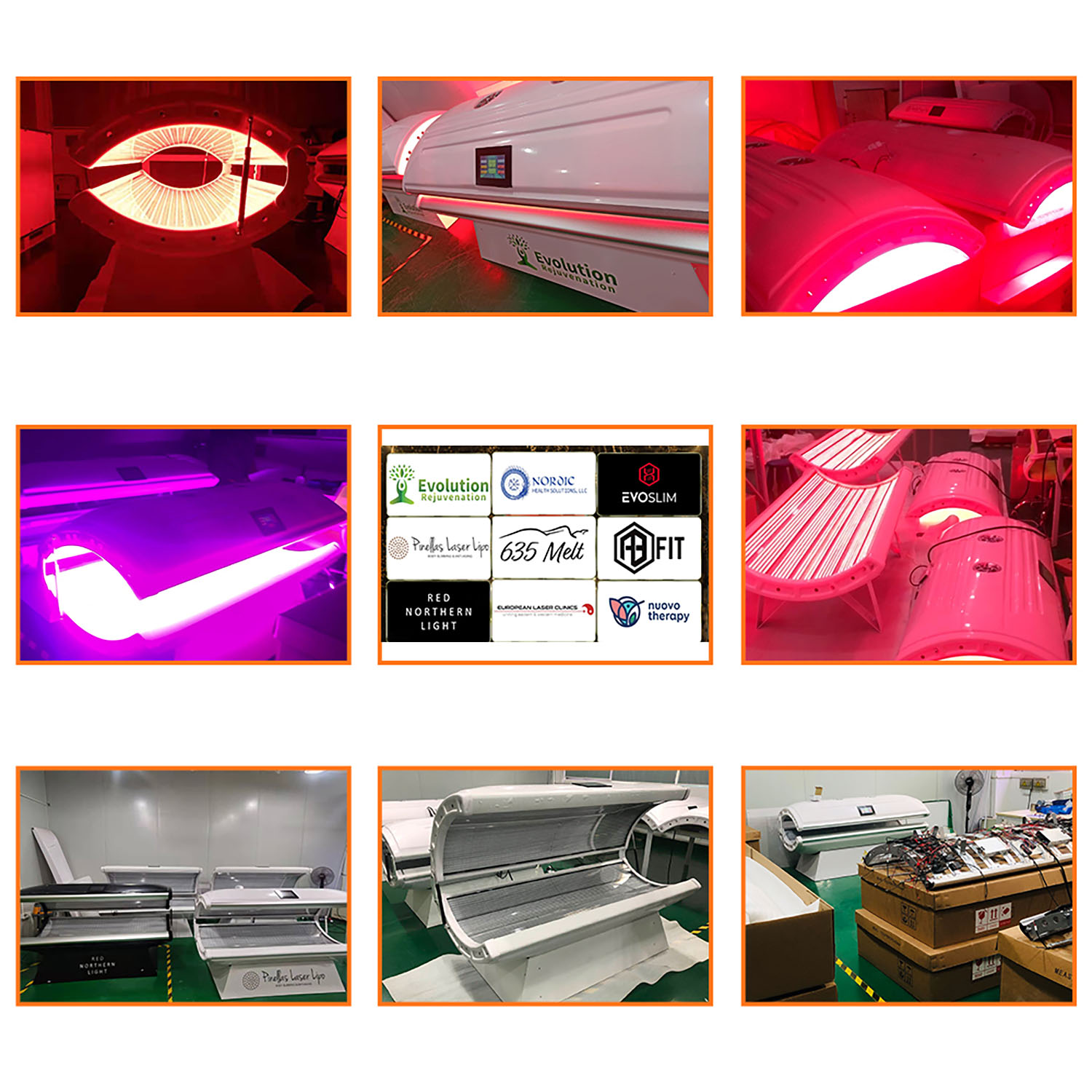The red light therapy bed is a large-area medical device that uses red light of a specific wavelength to irradiate the human body. It is a branch of phototherapy technology. Its core principle is to convert light energy into intracellular bioenergy through photobiomodulation (PBM), promote tissue repair, relieve inflammation and pain.
Core technical features
Wavelength and energy density
Using 600-700nm red light band, the penetration depth reaches 15-20mm, and the energy density is adjustable (50-150mW/cm²), which acts precisely on subcutaneous tissue and promotes cell metabolism.
Spectral stability
Through LED array or laser diode technology, the wavelength deviation is ≤±5nm to ensure the consistency of treatment effect.
Safety design
Equipped with overheating protection, radiation dose monitoring and emergency stop button, the radiation dose is strictly controlled within FDA/CE standards.
Intelligent control
Supports multi-mode programming (such as pulse/continuous irradiation), treatment time setting (1-60 minutes) and automatic dose calculation to adapt to personalized needs.
Application areas
Rehabilitation medicine
Indications: postoperative wound healing, muscle strain, neuralgia (such as lumbar disc herniation).
Case: Orthopedic hospitals use red light therapy beds in combination with sports rehabilitation, and patients' postoperative recovery period is shortened by 20%.
Dermatology
Indications: acne, herpes zoster, psoriasis, skin ulcers.
Data: Clinical trials show that red light therapy has an 85% reduction rate for acne inflammation and a 40% reduction in the course of treatment.
Pain management
Indications: arthritis, fibromyalgia, sports injuries.
Mechanism: Inhibits the release of substance P, reduces nerve sensitivity, and increases the pain relief rate by 50%-70%.
Beauty and anti-aging
Indications: collagen regeneration, wrinkle fading, and pigmentation improvement.
Effect: After 12 weeks of continuous use, skin elasticity is increased by 30% and wrinkle depth is reduced by 25%.
Maintenance and operation details
Daily maintenance
Cleaning: Use 75% alcohol to wipe the lampshade and treatment surface to avoid corrosion by chemical solvents.
Calibration: Check wavelength and energy density monthly. If the deviation exceeds 5%, contact the manufacturer.
Heat dissipation: Ensure that the vents are unobstructed and take a 30-minute break after 4 hours of continuous work.
Operation specification
Contraindications: Pregnant women, malignant tumors, and hemorrhagic diseases are prohibited.
Parameter setting: Adjust the distance and dose according to the treatment site.
Protection: Patients need to wear goggles to avoid direct exposure to the eyes.












